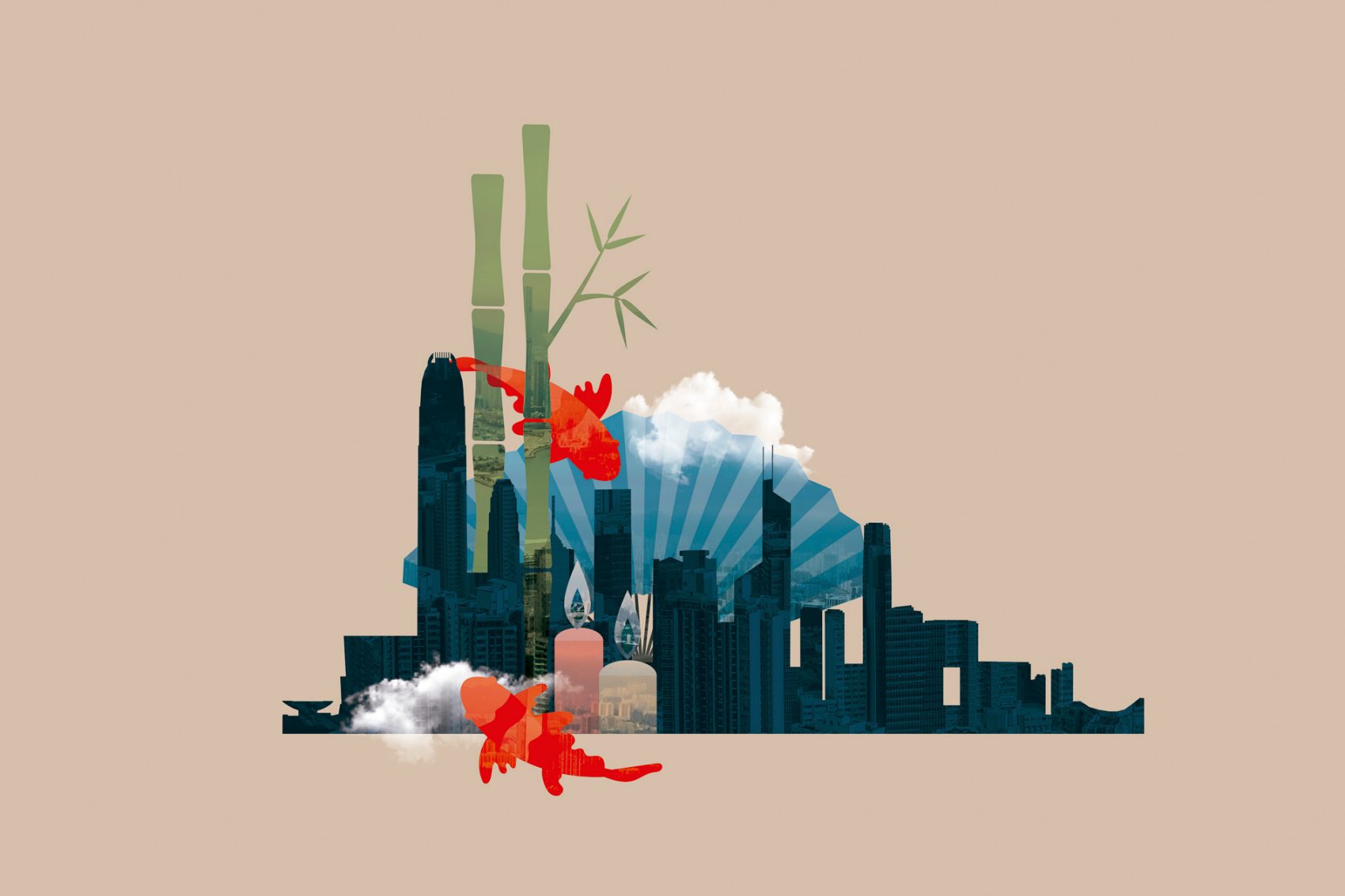Hong Kong’s densely packed skyline is the city’s crown jewel, a gleaming showcase of engineering and architecture. But delve a little deeper into its building designs and you’ll find a more mysterious force at work: feng shui.
The Chinese came up with a set of wisdom developed over millennia to help people decide where to live based on proper balance of natural features like rivers and mountains. This metaphysical art of analysing landscapes became known as feng shui (literally ‘wind water’).
Many people in modern Hong Kong are devoted to feng shui; companies often consult feng shui masters on the layout and decor of their offices to bring business success. But on a larger scale, numerous architectural and urban design decisions have been based on feng shui. Some residential buildings feature gaping holes. Government House, the home of the city’s highest official, had a fishpond put in about a decade ago for feng shui reasons.
The Bank of China Tower in Central is a well-known example, unfortunately, of bad feng shui. It is composed of four triangular modules meant to resemble growing bamboo shoots, an image of prosperity. But the design has been criticised for its aggressive, sharp, blade-like silhouette and for its triangles, a shape symbolising imbalance and conflict. One of the blades faces the nearby HSBC headquarters. Rumour has it that the orientation of HSBC’s lobby escalators had to swing 45 degrees to one side to counterbalance the blade. HSBC also has two pistol-like gondolas on the roof for window cleaning. These gondolas, with a red light beaming at the Bank of China building, are also antidotes.
Many Southeast Asian nations with Chinese heritage also boast feng shui legacies. It is said that the positioning of Singapore’s Merlion was decided by feng shui. In Putrajaya, near Kuala Lumpur, buildings are arranged based on the feng shui concept of having a green dragon (an imposing element, like a mountain) on the left and a white tiger (another strong but shorter element) on the right.
It’s hard to scientifically prove the validity of feng shui; many reject it as superstition. But the notions of harmonious living and pursuing good fortune are undeniably Chinese. And anyway, feng shui is said to cycle with the winds – luck changes with time, and life is necessarily filled with ups and downs. It’s good to remember that, along with trying to bring in the good and protect against the bad, sometimes we just have to go with the flow.
Hero image: SR Garcia
Hong Kong travel information
- China – the Chinese Mainland, Hong Kong SAR, Macao SAR and Taiwan Region
- Hong Kong SAR - English
- Chinese Mainland (China) - English
- Taiwan China - English
- 香港特別行政區 - 繁體中文
- 中国內地 - 简体中文
- 中國台灣 - 繁體中文
- Africa
- South Africa - English
- Asia
- Bangladesh - English
- Korea - English
- Singapore - English
- Cambodia - English
- 한국 - 한국어
- Sri Lanka - English
- India - English
- Malaysia - English
- Thailand - English
- Indonesia - English
- Maldives - English
- ประเทศไทย - ภาษาไทย
- Indonesia - Bahasa Indonesia
- Myanmar - English
- Vietnam - English
- Japan - English
- Nepal - English
- Việt Nam - tiếng Việt
- 日本 - 日本語
- Philippines - English
- Australasia
- Australia - English
- New Zealand - English




.renditionimage.450.450.jpg)


